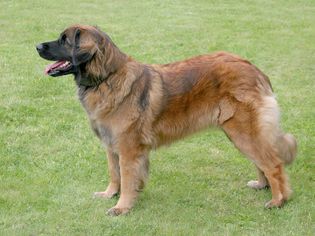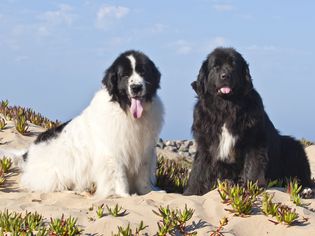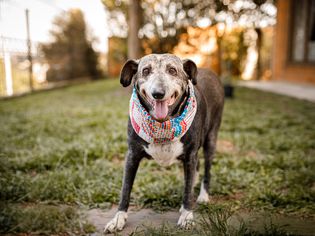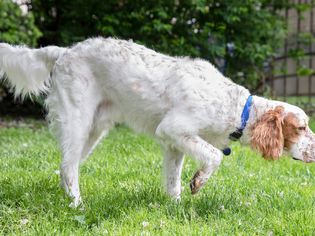The golden retriever is a medium-sized breed boasting a golden coat—reflective of its name— originating from Scotland. Known for their kind eyes, loyalty, and enthusiasm for life, the golden retriever is one of the most popular dog breeds in the United States. Though historically bred as hunting dogs in the Scottish Highlands, goldens also make excellent family dogs.
The dogs usually get along well with children and are incredibly affectionate and intelligent. Golden retrievers make wonderful service dogs and are often very successful as guide, assistance, or search and rescue dogs.
Learn more about the golden retriever’s history, care needs, temperament, and more.
Breed Overview
Group: Sporting
Height: 23 to 24 inches (males); 21.5 to 22.5 inches (females)
Weight: 65 to 75 pounds (males); 55 to 65 pounds (females)
Coat: Medium-length double coat
Coat Color: Light to dark gold
Life Span: 10 to 12 years
Temperament: Trustworthy, intelligent, playful, energetic
Hypoallergenic: No
Origin: United Kingdom, Scotland
Characteristics of the Golden Retriever
Golden retrievers have soft mouths, which refers to their ability to carry things without crushing them or biting into them. This is why they are used for retrieving objects, as their name implies, whether it’s game birds or items around the house.
| Affection Level | High |
| Friendliness | High |
| Kid-Friendly | High |
| Pet-Friendly | High |
| Exercise Needs | High |
| Playfulness | High |
| Energy Level | High |
| Trainability | High |
| Intelligence | High |
| Tendency to Bark | Medium |
| Amount of Shedding | High |
History of the Golden Retriever
Golden retrievers originated from the Scottish Highlands, where they were used primarily as hunting dogs. The Scottish estate owners needed a dog that could retrieve birds either in water or on land because their hunting grounds had many ponds and marshes. As guns were improved, retrievers needed to be able to bring back birds from farther distances.
To develop the ideal retriever, the Baron of Tweedmouth, Dudley Marjoribanks, crossed a Tweed water spaniel with a yellow-colored retriever. The four pups were then used in further breeding with lines including the Irish setter, bloodhound, St. John's water dog, and black retrievers.
He kept detailed records throughout the later years of the 19th century, showcasing the goal of developing a dog with a soft mouth for retrieving game but that was also strong and active. The breed gained popularity in England and was recognized by The Kennel Club of England in 1911.
During the early 20th century, golden retrievers were introduced to North America as both a hunting dog and a companion. The golden retriever was officially recognized by the American Kennel Club in 1925. When the AKC debuted the AKC Obedience Champion title in 1977, the first three dogs to earn the designation were golden retrievers. Presidential golden retrievers include those owned by Gerald R. Ford and Ronald Reagan.
Golden Retriever Care
Is a golden retriever high-maintenance? Yes, in addition to their high exercise needs and need for attention, golden retrievers have medium-length hair with a thick undercoat and a water-repellent outer coat, so they need to groomed regularly as well.
Grooming
Do golden retrievers shed a lot? They shed moderately most of the year and heavily in the spring and fall. They should be brushed daily and will probably need a bath about once a month. You can expect to live with plenty of dog hair if you have a golden retriever.
Your dog will need their nails trimmed once or twice a month to keep them from splitting and causing foot problems. If you can hear your dog’s nails clicking on the ground, it’s time to cut them. Start handling your dog’s paws while they’re a puppy so they’re used to having their nails trimmed, and use a high-quality nail clipper to get the job done quickly and safely.
You should also help your dog maintain good oral hygiene by brushing their teeth at least a couple of times per week. And, because they have droopy ears, they are more likely to have ear infections, so check your dog's ears regularly.
Exercise
Goldens are active dogs who require daily exercise and thorough training. It is best for a golden retriever to have access to a play yard for romping and to be taken out for a walk a couple of times per day. Golden retrievers get along well with most other dogs and a trip to the free-run dog park is likely to be appreciated.
Golden retrievers are known to be mouthy, carrying things around in their mouths. Have toys and chew bones available to satisfy this oral fixation.
If you have a puppy, it’s important to know that they grow quickly. To prevent injuries or improper development of the joints, make sure they don’t run on hard surfaces until they are around 2 years old, as you want the joints to form properly first. For example, you can let your puppy play on grass instead of concrete.
Training
This breed likes to be where the action is with the family rather than relegated to the yard, where they can easily get lonely. They are not suited to be watchdogs, as they are friendly with everyone. Socialization is important for dogs and comes pretty naturally to the golden retriever. They should do well in a multi-pet household with other canines and cats.
Golden retrievers are gentle, patient and enjoy playing with kids, but their size means they can knock over a small child if they are excited. This might scare little kids, especially visiting playmates who are not used to a larger dog. When they learn to play together appropriately, a golden retriever is a good match for families with kids.
Also, golden retrievers don’t tend to bark a lot, but they remain puppy-like for a few years, so they will be silly and goofy for a long time. Proper training using techniques like positive reinforcement from a young age will ensure they know the rules, and if your dog does bark too much, you can use training to stop them from barking excessively.
Common Health Problems
Responsible breeders strive to maintain the highest breed standards as established by kennel clubs like the AKC. Dogs bred by these standards are less likely to inherit health conditions. However, some hereditary health problems can occur in the breed. Conditions to be aware of include:
- Hip dysplasia: This is a malformation of the hip sockets, which can lead to pain and arthritis.
- Elbow dysplasia: This is a painful malformation of the dog's elbows on the front legs.
- Osteochondrosis (OCD): This is an inflammatory condition in which diseased cartilage separates from the adjoining bone.
- Various types of cancer: The most common cancers in golden retrievers include hemangiosarcoma and lymphoma.
- Heart conditions: The most common genetic heart problem in this breed is subvalvular aortic stenosis (SAS). It can cause dogs to die suddenly.
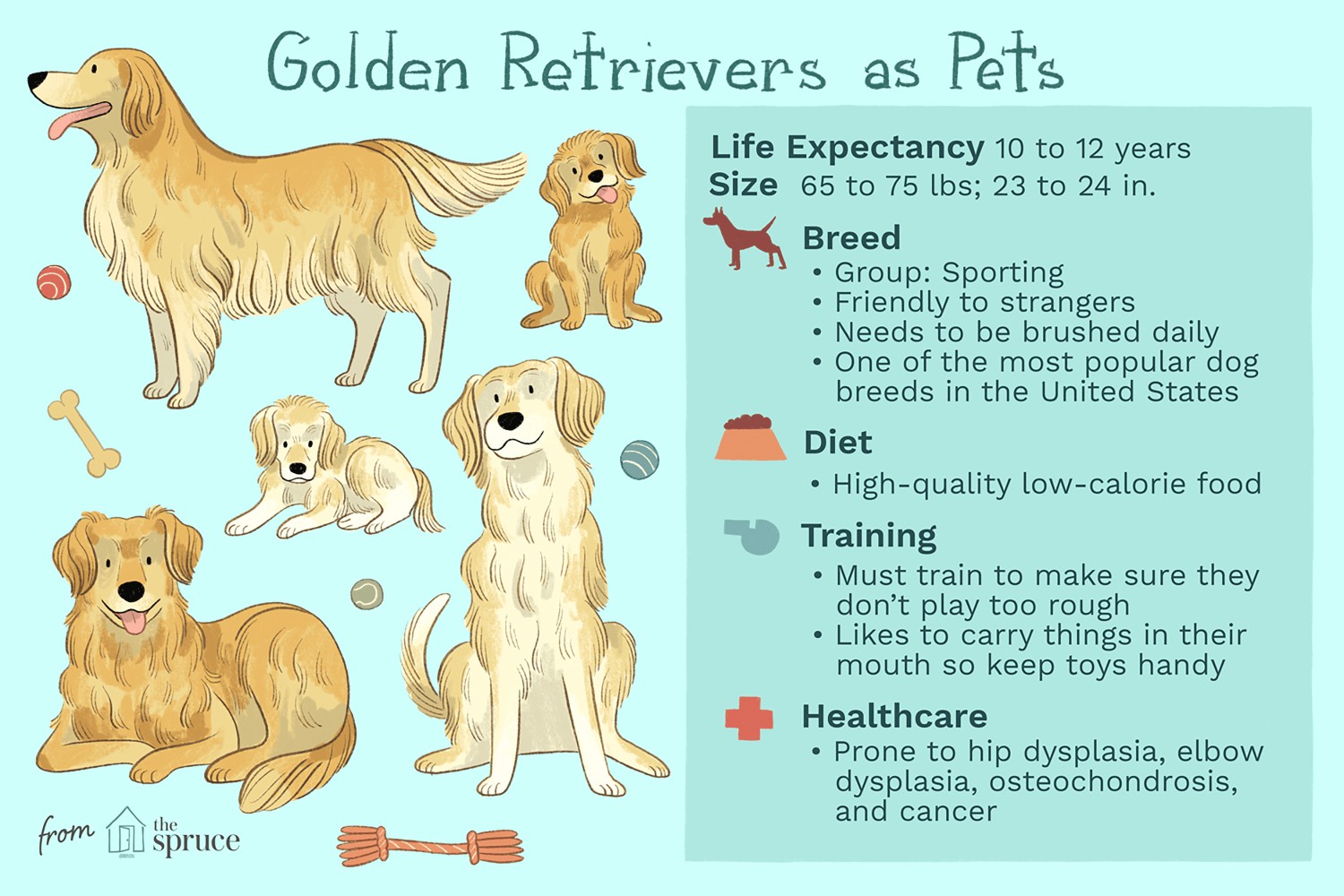
The Spruce / Kelly Miller
Diet and Nutrition
Golden retriever puppies grow rapidly and should be on a low-calorie puppy diet that will keep them from growing too fast and increasing their risk of bone disorders.
An adult golden retriever should be fed two meals a day of up to 1.5 cups of dry dog food per meal. It's best to measure out the food and provide it as meals rather than leaving food out for free-feeding.
The amount needed for an individual dog depends on their size, activity level, age, and other factors. You should always provide fresh, clean water.
Be sure to monitor your dog's weight as obesity will shorten your pet's lifespan and predispose other health conditions. If you notice your dog is gaining weight, discuss this with your veterinarian. Get recommendations for feeding schedules, amount of food, type of food, and exercise to keep your dog healthy.
Where to Adopt or Buy a Golden Retriever
Various factors can affect the cost of a golden retriever puppy, and their price can be as high as $3,500.
Check your local animal shelter and rescue groups for golden retrievers in need of homes. A number of nationwide rescue groups for golden retrievers provide online resources to find a dog, including:
- Golden Retriever Rescue Resource
- Golden Retriever Rescue, Education and Training
- Golden Retriever Club of America
Golden Retriever Overview
Golden retrievers are popular because of their loving personality, their playful nature, and their ability to get along with everyone, including kids and other pets. Yet, there are still some things to consider before bringing one home, such as their grooming and exercise needs.
Pros of Golden Retrievers
- Sweet, lovable, and incredibly good-natured
- Loves to be around family and is good with kids
- Intelligent and easy to train
Cons of Golden Retrievers
- Food-obsessed and can easily gain too much weight
- Needs a significant amount of exercise and training
- Sheds regularly and needs daily brushing
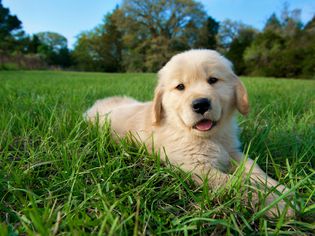
More Dog Breeds and Further Research
Before you decide on a golden retriever, do plenty of research: Talk to other golden retriever pet parents, reputable breeders, and rescue groups to learn more.
If you’re interested in similar breeds, look into these to compare the pros and cons:
- Labrador Retriever
- Newfoundland
- Chinook
- Saint Bernard
There is a wide variety of dog breeds out there. With a little research, you can find the right one to bring home.
- Are golden retrievers high-maintenance?
Golden retrievers are considered high-maintenance for a few reasons. They thrive on a lot of attention and interaction with family, so they shouldn’t be left alone for long. In addition, they shed a lot and need to be brushed often, and they have a lot of energy so they need to be able to exercise every day.
How expensive is a golden retriever?When purchased from a quality breeder, a golden retriever could cost anywhere from $1,000 to $3,500. Though, if you rescue a golden retriever from a local shelter, the cost will typically be around $200 to $500 instead.
Are golden retrievers the nicest dogs?Golden retrievers are known for being one of the most well-mannered dogs, a notoriously gentle and kind breed. They're well known for being great family dogs, extremely friendly towards kids, and rarely demonstrate behavioral issues around the house.


